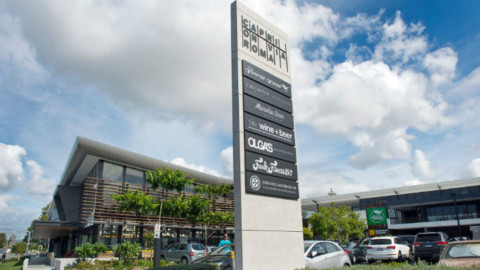TasWater is undertaking one of the largest desludging projects in Tasmania’s North West to remove thousands of tonnes of biosolids from the Smithton Sewage Treatment Plant (STP) lagoons.
TasWater have entered into an agreement with a local farmer in Smithton, to divert the treated effluent water from the plant for use on grazing land.
This means that there will be zero to minimal discharge into Kemps Bay during the summer months.
“When biosolids are first spread the carbon content initially appears as a black band in the paddock, and as the water component is absorbed by the soil, the carbon gradually disappears and in most cases, has gone within two or three days,” Sewerage System Performance Leader at TasWater, Royce Aldred said.
“The build-up of sludge in the Smithton STP has reduced its operating capacity over the years, prompting these important works.
“Re-use of the Smithton STP biosolids on farms is the preferred outcome promoted by the TBRG as it’s an environmentally responsible approach to dealing with these by-products while benefiting the longer-term sustainability of soils on the recipient farms.
“Removal and re-use of the biosolids also improves STP performance while importantly improving the quantity of effluent that is released through the outfall to the environment,” Mr Aldred said.
As is the case in any water supply catchment, elevated contaminants from runoff will go through the water treatment processes, ensuring the drinking water meets Australian Drinking Water Guidelines before being supplied to TasWater customers.
The idea of reusing by-products, treated water and biosolids, from the sewage treatment process has a long history in Tasmania.
Biosolids are the stable solid residues left from the treatment process while treated water can be used to irrigate pasture and crops.
The high carbon and nutrient contents, particularly of phosphorus and nitrogen in biosolids and in treated water are extremely valuable and are an effective fertiliser for sustaining agricultural productivity.
The Tasmanian Environmental Protection Authority (EPA), along with all other Australian state jurisdictions have issued guidelines for the use of treated biosolids.
In Tasmania these are the Tasmanian Biosolids Reuse Guidelines 1999, (TBRG) and the Environmental Guidelines for the use of Recycled Water in Tasmania (2002).
TasWater strictly adheres to these guidelines and has developed policies and strategies for the reuse of these resources.
This material is rich in carbon, nitrogen, and phosphorus (essential plant nutrients) and is beneficial when reused on farms as a fertiliser replacement.
“TasWater have also entered into contracts with other properties owners in the area where the dewatered biosolids can be safely transported and spread on agricultural land in accordance with the guidelines,” Mr Aldred said.
The treated biosolids must comply with the strict TBRG conditions; these relate to freedom from contaminants, a low risk of pathogen impacts, and a set buffer distance for features such as water courses, houses, roads and native vegetation.
These and other precautions are in the guideline to reduce the risk of runoff into water courses.
Each agreement between a landowner and TasWater requires laboratory testing of the biosolids and the soil to determine the appropriate use of the product on the land.
There are also stock with-holding periods or quarantine periods precluding the use of the land for raising certain crops.
There is a low possibility of the biosolids entering any significant waterways without a major rain event, which would see a whole range of other pollutants entering the waterway at the same time.











